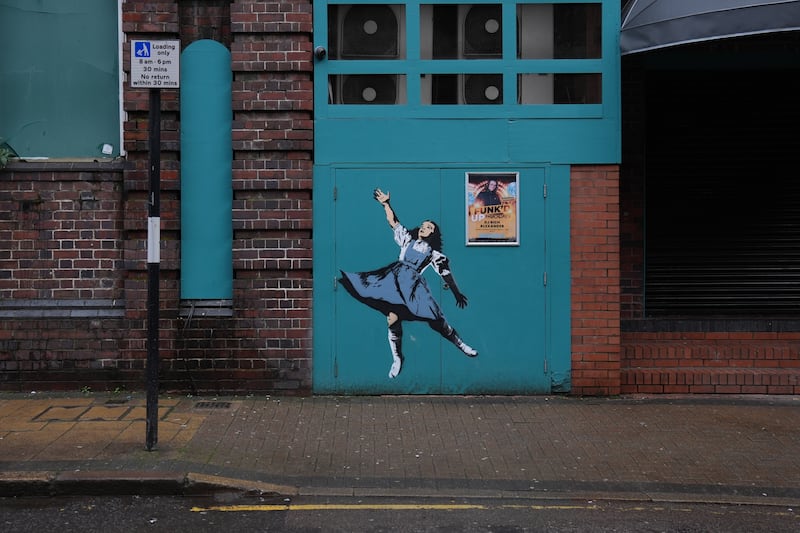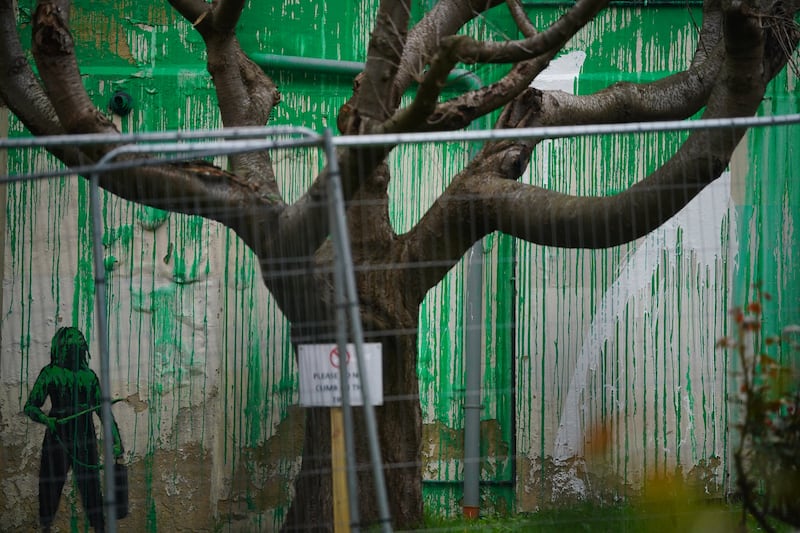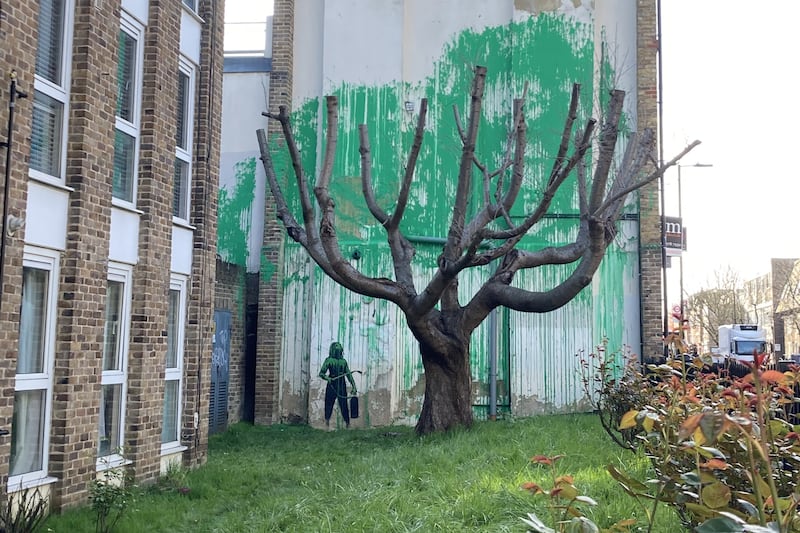The mysterious street artist known only as Banksy, who has created major headlines again over recent days, is among the most enigmatic and contentious cultural figures of the modern era.
Since his subversive and satirical paintings first emerged in and around Bristol over 30 years ago, new examples have regularly appeared across Europe, the Middle East and the United States.
He is noted for using a distinctive stencilling technique in the course of creating striking images on walls and bridges in a range of locations which make social and political points, and he plainly relishes the controversy and upheaval which follows.
Banksy’s latest work, on the side of a building in Kent, focused attention on the massive issue of domestic violence, but was partially dismantled by council staff as, in his unique style, it was visually linked to an abandoned freezer.
His admirers view him as nothing less than a genius, but his critics, including environmental campaigners, have stressed that his activities are well outside the law and effectively represent a form of vandalism.
While the debate over Banksy will continue, it is clear that his influence has unfortunately helped to encourage much less talented rivals who have increasingly blighted many neighbourhoods.
In urban areas across Ireland, north and south, some individuals seem to believe they are entitled to spray paint what they regard as their individual tags on kerbs, gable ends, junction boxes and even old phone boxes.
The result is an ugly mess, whether it is in an inner city setting or a residential district like Belfast's Stranmillis Road, where, as we reported earlier this week, particular problems have arisen.
Ordinary citizens are entitled to confirmation that the authorities will respond firmly to what deserves to be treated as unacceptable behaviour wherever it surfaces.
A strong and separate case can be made for political murals, as they usually have community support and attract significant numbers of tourists, although it is important that they are properly maintained and do not reflect threatening themes.
Banksy's contributions will be widely felt to have artistic merit, and many have indeed ended up being transferred to museums and galleries, so their legal status may well be surrounded by uncertainty.
Those who instead engage in blatant displays of graffiti, often in public parks and along riverside walkways, should expect to face criminal charges if they do not desist.







